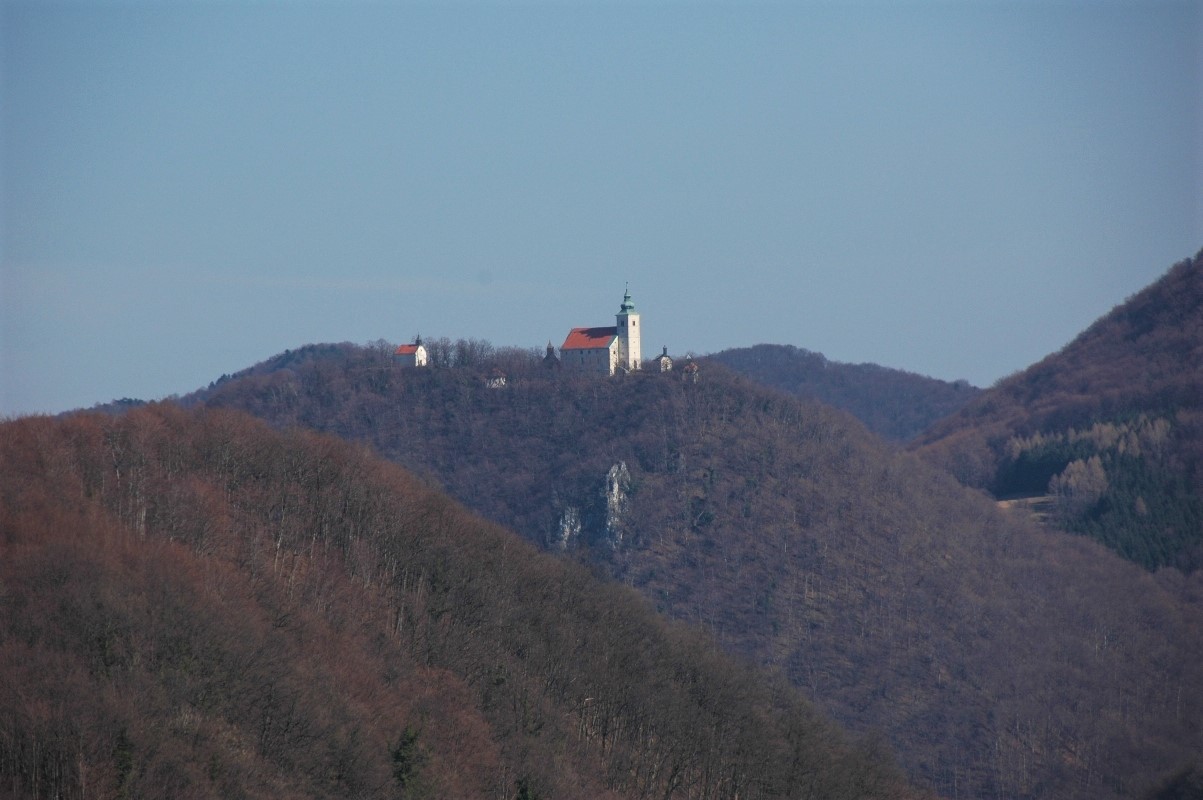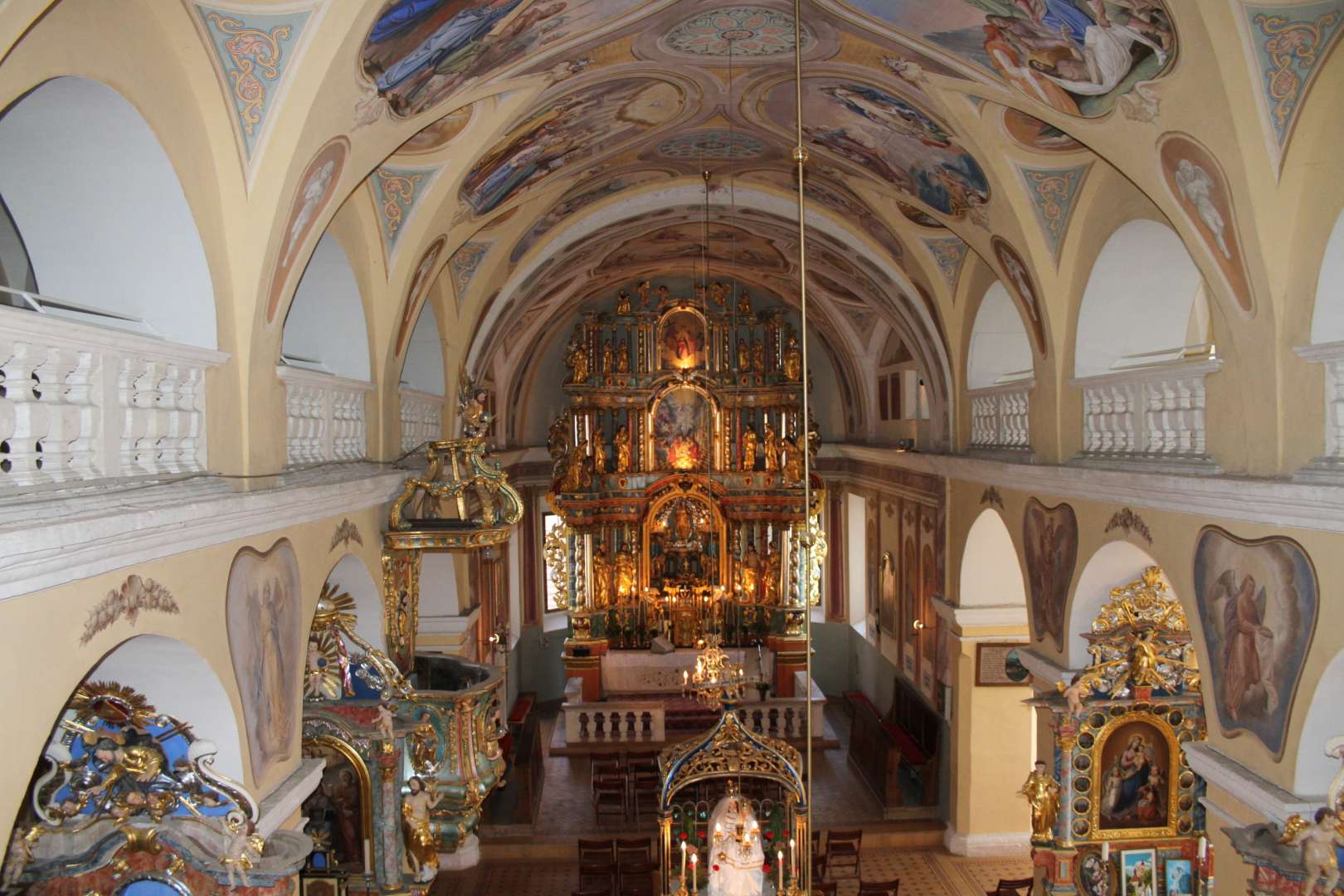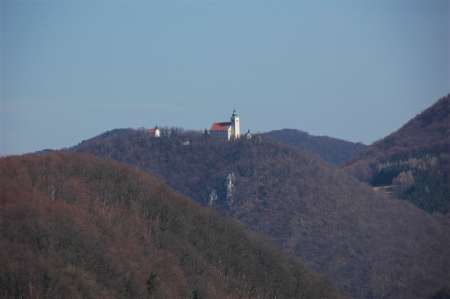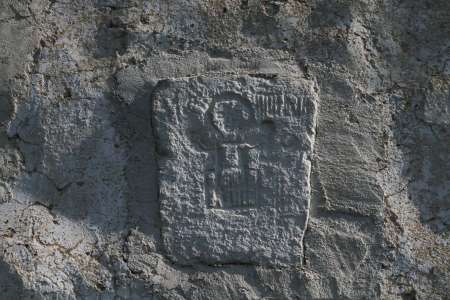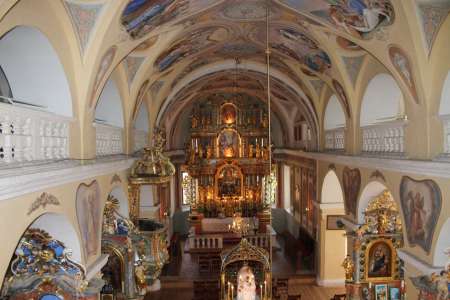Description
Svete gore is a 527 m high hill above Bistrica ob Sotli, part of Mary’s pilgrimage route along Sotla river. From the top there are beautiful views of Boč, Pohorje, Kamnik Alps, as well as Croatian Zagorje and Donačka gora. Chapels on this pilgrimage route are dedicated to: Lourdes Mother of God, st. Sebastian in Fabian, St. Jurij and St. Martin. This pilgrimage route is one of the most important pilgrimage routes in the area. You will remember this route after the ridge, on which all the chapels are located. Svete gore are also known for the Way of the Cross – the work of academic sculptur Stane Jarm. Svete gore are also great for day trips and are especially popular with hikers and cyclists, as it is part of the Orans cycling route.
Orans cycling path to Svete gore
Starting point: municipal house Bistrica ob Sotli
Length: 40 km
Time: 4 – 5 hours
Suitable for: recreational cyclists
Recommended equipment: mountain bike
Possible alternative: shortened variants (10, 24 or 33 km) – suitable for families
This cycling path begins in Bistrica ob Sotli and continues towards Polje pri Bistrici, left along Sotla and then ascends to scenic Sveti križ. From here it descends through Srebrnik, past Slomšek monument uphill to Križan vrh. From here path leads us to Podsreda and Podsreda castle. From there it continues left to the idyllic castle road to Svete gore. From here the trail continues towards Bizeljsko castle, to Kunšperk and from there it returns to starting point.
Pilgrimage centre
Svete gore are considered as one of the oldest Slovenian pilgrimage centres. They are part of Mary’s pilgrimage route in Slovenia, which is part of international pilgrimage route that leads pilgrims from Czestochowa through Levoca to Mariazell. The Slovenian Mary’s Pilgrimage Route connects the Styrian branch of the Mary’s Way in Austria, and then continues towards Croatia, to the Croatian national shrine – to Marija Bistrica. The longest trail goes past the churches of Mary in Ložno, Ljubična, Sladka Gora, Šmarje pri Jelšah, Završe pri Grobelnem, Botričnica, Kalobje, Dobje pri Planini, Zagorje, Kozje, Podsreda and Svete gore above Bistrica ob Sotli. The entire route has 10 stages in the length of 216 km.
Pilgrimage to Svete gore
It is hard to say exactly when this pilgrimage began, but it can be said that coincided with the beginning of Christianity on our soil. it is believed that a pagan shrine stood on the hill before that. The discovery of Christian Slavic graves can relate to the beginning of pilgrimages to Svete gore. This means pilgrims are visiting Svete gore for approx. 1000 years.
In the past, pilgrims came to the Holy Mountains in processions with flags. In addition, fairs were also held. The hike, which sometimes lasted for several days, continued in the first years after World War II. The story goes that a family who were in the camp during the war vowed that if they survived the war, they would go to the Holy Mountains on their knees in gratitude. They did so after arriving from the camp. At the top, their knees were covered in blood. The people who witnessed this started to cry.
Church and chapels at Svete gore
At Svete gore one can see: The Church of Mary, chapel of St. Jurij, St. Martin, St. Sebastian, and St. Fabian (often called Boštjan’s chapel), chapel dedicated to the Lourdes Mother of God, which stands at the very top of the ridge.
At the foot of the hill there is also a rectory. It dates to the 18th century and was later renovated. In front of the parish there is a chapel with a statue of the Sorrowful Mother of God.
Legends of Svete gore
Svete gore relate to some legends. The first is about lost countess who is supposedly got lost in the woods during a night hunt. She vowed to build a church if she survives and comes out of the woods alive. Another legend mentions oxen who carried a statue od Mary, which is standing in the middle of the church. The oxen are supposed to go to the top on their knees and this remains are still visible today along the footpath through the forest.
Svete gore remains popular day trip and pilgrimage centre. The central gathering is on September 8 (Mali šmaren) when the birth of Virgin Mary is commemorated. A very popular time to visit is also on August 15 (Veliki šmaren), when the Assumption of Mary is celebrated.

